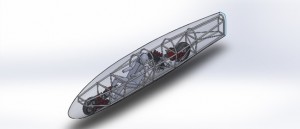Meet the student hoping to engineer a new land speed recor
07.11.2016
Sam Marsden and his team of fellow engineering students want to break the sub-1000 cc world record with a bike of their own design.
Sam Marsden and his team of fellow engineering students want to break the sub-1000 cc world record with a bike of their own design.
Sam Marsden’s dyslexia is so severe that, as he describes it, he struggles to read and write at all. But he didn’t let that stop him getting into one of the country’s top universities, and he isn’t going to let it stop him creating a world record-breaking motorbike.
click here
Together with a group of fellow students from Queen’s University Belfast, Sam intends to beat the sub-1,000 cc land speed record of 183mph, which was set by motorcyclist Burt Munro nearly 50 years ago. In fact, the fourth-year mechanical engineering student has been dreaming of this goal since the time of his GCSEs, when the already motorbike-crazy teenager watched the film about Munro’s record attempt, The World’s Fastest Indian.
The Project Velocity team have designed the chassis, suspension, steering and body shell. (Engine pictured from grabcad.com).
‘At the end of the movie it says “This record still stands”,’ he recalls. ‘I couldn’t believe it had stood for so long and that’s where the obsession began. From that it really drove me: I always wanted to do engineering and was always into motorbikes but it was like a locus, a central point that focused me. If I hadn’t made that decision back then I wouldn’t have been the position I’m in now.’
After talking to his grandfather’s old friend Prof Gordon Blair – the well-known motorbike engine designer and former dean of engineering at Queen’s – Sam was further inspired and set off to university where he began gathering the knowledge and assembling a team to help reach his goal. But it was his industrial placement year with Red Bull Racing that gave him both the practical skills and the final motivation he needed to get things moving.
‘I decided it was now or never,’ he says. ‘My placement gave me the real-world knowledge and core skills that you can’t get from a degree.’ It also gave him a chance to get advice from the experts. ‘Speaking to me for 10 minutes was nothing for them but it saved me months if not years. They have years of experience behind them.’
Project Velocity’s wooden prototype.
Back at uni, Sam and his team – who had been sharing ideas via Skype while on placement – had to persuade their engineering department to let them design the bike they would need for the record attempt as part of their final-year project. ‘I can’t tell you how scary it was,’ he says. ‘We didn’t know if it was going to work or if it would compromise our degree. But because we had put so much work in the previous year we were able to hit ground running.’
With the chassis, suspension, steering and body shell all designed, Project Velocity now has less than a year to finish analysing and computer-modelling the bike before building it and shipping it off to Bonneville Salt Flats in Utah, ready for the record attempt in August 2015.

Project Velocity need sponsorship to bring their CAD designs to life.
Sam is so focused on this goal he hasn’t given much thought to the rest of his career. But despite the very specific experience he has gained, he sees motorsport engineering as just one possibility among many. ‘One thing that university probably does wrong is to narrow the focus of engineers,’ he says. ‘But engineering is so much broader and the approach can be applied to many things.’
Right now, however, his more pressing concern is raising the funds he needs for the record attempt. ‘I know if we build the bike we can break the record,’ he says. ‘These aren’t dreams; they’re reality waiting to happen.’













































